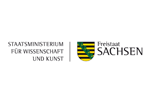Target agreements are a core element of state-level governance of higher education institutions (HEI) in Saxony. The governing coalition of CDU and SPD wants to have this governance system and its instruments evaluated, and the State Ministry of Science and Arts (SMWK) has defined a two-step procedere: First, the Saxon system is to be compared with the systems of other German Länder, and second, the SMWK wants to discuss governance effects with Saxon HEIs.
The German Center for Higher Education Research and Science Studies (DZHW) will bring its expertise in the nation-wide comparison of Länder models of higher education governance. The main questions are:
- How can the Saxon system of higher education governance be described in detail? How are targets defined? What main incentives are provided? How are the degrees of target achie-vements measured, and what are the consequences if central criteria have not been met?
- In what ways are the instruments of higher education governance in Saxony interlinked? What are the relations between development plans, target agreements and funding?
- How did the Saxon governance system develop over time? Which major modifications were introduced during the governance period 2017-2020 compared to 2014-2016? What were central insights of the governcance period 2014-2016 concerning the design and implemen-tation of target agreements, the measurement of target achievements, and the enforcement of financial consequences? To what extent have these insights shaped the approach in the current target agreement period?
- How can the different models of higher education governance in the German Länder be described? What is the specific value of target agreements within each governance system? How are target agreements and contiguous governance mechanisms designed (e.g. thematic areas, accomplishment of a binding character, financial effectiveness)? What is the specific relevance of additional governance instruments, and how coherent is the system? Can diffe-rent types of governance models be distinguished in the German Länder, and what are their main characteristics?
- According to the prior findings, how can the Saxon system of higher education governance be classified and assessed?
To answer the questions, document analyses and expert interviews will be combined. The results of the comparative analysis will be presented both in text and figures (overview tables, charts). Wherever suitable, typologies, categories and scales will be developed in order to explain and illustrate the classification and evaluation of the Saxon model. At the end of the project, a written final report will be handed out to the SMWK.

